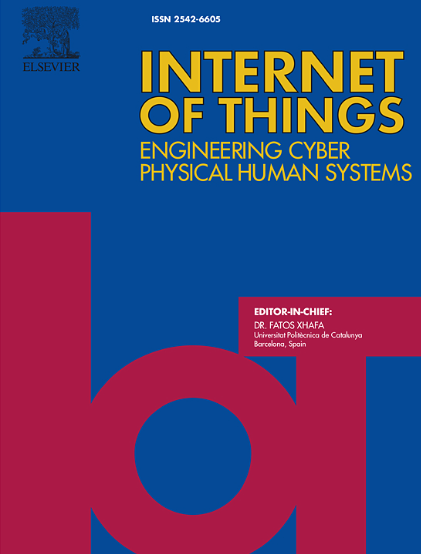用于水下声学网络 (UAN) 的联盟区块链边缘认证方案
IF 6
3区 计算机科学
Q1 COMPUTER SCIENCE, INFORMATION SYSTEMS
引用次数: 0
摘要
物联网(IoT)可在农业监测、污染监测、医疗保健和水下监测等不同领域实现自动化操作。水下物联网(IoUT)可观测水下环境,协助勘探,减轻灾害,并监测温度、压力和污染等因素。IoUT 依靠智能水下传感器网络将数据发送到地面基站和物联网设备进行存储和分析。然而,这些系统在无人值守的环境中运行时面临着安全风险。许多身份验证方法依赖于集中的第三方,导致计算成本和能耗增加。为了降低安全风险,自主水下设备需要安全连接和认证。本文提出了一种用于 UAN 的分散式身份验证机制,以防止未经授权的访问并确保云中数据的安全存储。建议的机制优先考虑稳健性、透明度和能效。建议的解决方案采用基于边缘和云层的架构,利用定制的区块链技术实现数据的安全存储和处理。通过利用真实或随机(ROR)甲骨文模型和 Scyther 工具进行形式分析,对所建议解决方案的安全性进行了彻底检查。非正式分析进一步证实了该解决方案能够抵御各种恶意攻击。此外,性能和比较分析表明,拟议解决方案超越了现有方案。本文章由计算机程序翻译,如有差异,请以英文原文为准。
A consortium blockchain-edge enabled authentication scheme for underwater acoustic network (UAN)
The Internet of Things (IoT) allows for automated operations in diverse fields, such as agriculture monitoring, pollution monitoring, health care, and underwater monitoring. The Internet of Underwater Things (IoUT) observes the underwater environment, assists in exploration, mitigates disasters, and monitors some factors including temperature, pressure, and pollution. The IoUT relies on a network of intelligent underwater sensors that send data to surface base stations and IoT devices for storage and analysis. Nevertheless, these systems face security risks as they operate in unattended environments. Many authentication methods depend on a centralized third party, leading to higher computation costs and energy usage. To mitigate security risks, autonomous underwater devices need secure connections and authentication. This paper suggests a decentralized authentication mechanism for UAN to safeguard against unauthorized access and ensure secure data storage in the cloud. The proposed mechanism prioritizes robustness, transparency, and energy efficiency. The suggested solution incorporates an architecture based on edge and cloud layers, utilizing customized blockchain technology for secure storage and processing of data. The security of the proposed solution has been thoroughly examined through formal analysis utilizing the Real or Random (ROR) Oracle model and Scyther tool. Informal analysis further confirms the solution’s resilience against various malicious attacks. Additionally, performance and comparative analysis demonstrate that the proposed solution surpasses existing schemes.
求助全文
通过发布文献求助,成功后即可免费获取论文全文。
去求助
来源期刊

Internet of Things
Multiple-
CiteScore
3.60
自引率
5.10%
发文量
115
审稿时长
37 days
期刊介绍:
Internet of Things; Engineering Cyber Physical Human Systems is a comprehensive journal encouraging cross collaboration between researchers, engineers and practitioners in the field of IoT & Cyber Physical Human Systems. The journal offers a unique platform to exchange scientific information on the entire breadth of technology, science, and societal applications of the IoT.
The journal will place a high priority on timely publication, and provide a home for high quality.
Furthermore, IOT is interested in publishing topical Special Issues on any aspect of IOT.
 求助内容:
求助内容: 应助结果提醒方式:
应助结果提醒方式:


